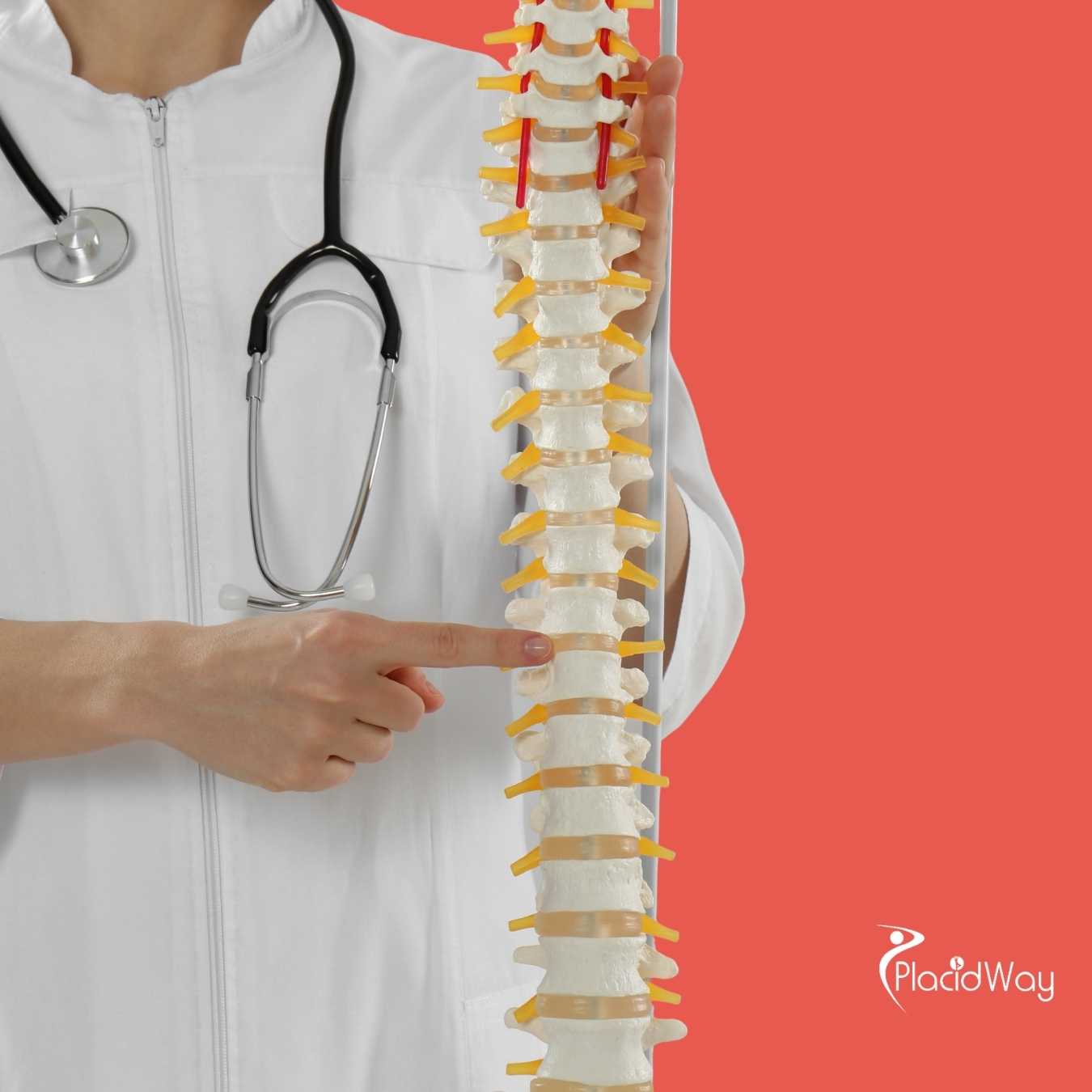Stem Cell Treatment for Brain Health: Cost, Options, and What to Expect
.png)
Welcome to our in-depth guide on understanding the stem cell therapy cost for the brain. If you or a loved one are exploring this innovative treatment for neurological conditions, one of the first and most critical questions that comes to mind is often about the financial investment required. It’s important to know that the pricing for such advanced medical procedures isn't straightforward and can fluctuate widely depending on a multitude of factors. Our goal here is to demystify these costs, providing clarity and comprehensive information to help you make informed decisions. We'll dive into what influences these prices, what you can expect, and even how medical tourism plays a role.
Understanding the nuances of brain stem cell therapy cost involves looking beyond a single number. Factors such as the specific brain condition being treated, the source and type of stem cells utilized, the number of treatments required, and the geographic location of the clinic all play a significant part in the overall expense. While it represents a substantial investment, many individuals view it as a potential path to improved quality of life. This article will break down these elements, address common concerns, and offer insights into various aspects of financing and international options for stem cell treatment for neurological disorders.
What is the average stem cell therapy cost for the brain?
The financial aspect of stem cell therapy for brain conditions is a primary concern for many patients and their families. While there's no single fixed price, the general range reflects the complexity, research, and specialized care involved in these cutting-edge treatments. This broad spectrum highlights the need for prospective patients to conduct thorough research and obtain detailed quotes from reputable clinics. Factors like the specific brain disease (e.g., Parkinson's, Alzheimer's, stroke recovery), the type of stem cells used (autologous from the patient, allogeneic from a donor), and the number of required injections or infusions all contribute to the final price.
It's crucial to understand that these costs often cover more than just the cells themselves. They typically include initial consultations, diagnostic tests, the stem cell harvesting or preparation process, the administration procedure, and post-treatment follow-up care. Some advanced protocols might involve multiple treatment sessions spread over several months, further influencing the total expense. Patients exploring brain stem cell treatment prices should always ask for a detailed breakdown of costs to understand exactly what is included.
What factors influence the cost of brain stem cell therapy?
The variance in stem cell therapy cost for the brain is not arbitrary but is driven by several key factors. One major determinant is the specific brain condition being treated. Different neurological disorders may require varying types of stem cells, different administration methods (e.g., intravenous, intrathecal, direct brain injection), and different treatment protocols, all of which impact cost. For instance, treating a degenerative condition like Parkinson's disease might involve a different approach than recovering from a traumatic brain injury.
Another significant factor is the source and type of stem cells. Autologous stem cells (from the patient's own body, often bone marrow or adipose tissue) require a harvesting procedure, which adds to the cost. Allogeneic stem cells (from a donor, like umbilical cord tissue or placental cells) have different processing and sourcing costs. The specific kind of stem cell (e.g., mesenchymal stem cells, neural stem cells) also impacts pricing due to varying research, production, and regulatory complexities.
Furthermore, the geographic location of the clinic plays a huge role. Clinics in countries with higher operating costs, stringent regulations, and advanced medical infrastructure often charge more. The expertise and reputation of the medical team, the technology used for cell processing and administration, and the comprehensiveness of the post-treatment care package also contribute to the overall brain stem cell therapy cost.
Is stem cell therapy for neurological conditions covered by insurance?
For most individuals, standard health insurance plans, whether private or government-funded, typically do not cover the cost of brain stem cell therapy. This is primarily because many stem cell treatments, particularly those for complex neurological conditions, are still considered experimental or investigational by major regulatory bodies and insurance providers. Insurance companies usually require a treatment to be FDA-approved (or equivalent in other countries) and recognized as a standard of care before they will cover its costs.
While some limited stem cell procedures, like bone marrow transplants for certain cancers, are covered, these are well-established and universally accepted medical treatments. The innovative and rapidly evolving field of stem cell therapy for brain conditions has not yet reached this stage for most applications. Patients often need to bear the entire financial burden themselves, which underscores the importance of fully understanding the costs and exploring financing options upfront. It is always recommended to contact your insurance provider directly to confirm their specific policies regarding any aspect of neurological stem cell therapy.
What brain conditions can stem cell therapy potentially treat?
The potential applications of stem cell therapy in treating brain conditions are vast and continue to expand with ongoing research. Stem cells possess unique abilities to differentiate into various cell types, promote tissue repair, reduce inflammation, and stimulate regeneration, making them a promising candidate for neurological disorders where damage or degeneration occurs.
Some of the key brain and neurological conditions where stem cell therapy is being explored include:
- Parkinson's Disease: Aiming to replace dopamine-producing neurons.
- Alzheimer's Disease: Focusing on reducing inflammation and promoting neuronal support.
- Stroke Recovery: Helping to repair damaged brain tissue and improve neurological function.
- Multiple Sclerosis (MS): Modulating the immune system and repairing myelin.
- Traumatic Brain Injury (TBI): Promoting tissue repair and reducing secondary damage.
- Cerebral Palsy: Potentially improving motor function and reducing inflammation.
- Spinal Cord Injury: Encouraging nerve regeneration and functional recovery.
While research shows considerable promise, it's important to note that many of these applications are still in various stages of clinical trials. Patients considering stem cell treatment for brain conditions should seek clinics that adhere to ethical guidelines and provide transparent information about their treatments.
Are there affordable options for brain stem cell treatment abroad?
The high stem cell therapy cost for the brain in many developed nations has led to a growing trend of medical tourism for these specialized treatments. Patients often look to countries where the cost of living, healthcare infrastructure, and regulatory environment allow for more competitive pricing without necessarily compromising on quality or expertise. These options can make brain stem cell therapy more accessible.
Several countries have emerged as popular destinations for individuals seeking neurological stem cell therapy abroad. These include:
- Mexico: Known for a growing number of clinics offering various stem cell treatments.
- Costa Rica: A well-established medical tourism destination with advanced clinics.
- Panama: Gaining recognition for its stem cell research and treatment facilities.
- South Korea: A leader in stem cell research with robust medical tourism infrastructure.
- Germany: Offers highly regulated and advanced treatment options, though often at a higher price point than other medical tourism hubs.
The affordability abroad doesn't just come from lower procedure costs but also from potentially reduced associated expenses like hospital stays and consultations. However, it's vital for patients to thoroughly vet clinics, ensure they meet international standards, and understand the full package of services included when considering stem cell treatment for brain conditions overseas.
How do clinics in Mexico or Costa Rica compare for brain stem cell costs?
For patients exploring medical tourism, Mexico and Costa Rica frequently stand out as top choices for brain stem cell treatment due to their combination of quality care and more accessible pricing. These countries have developed robust medical tourism sectors, attracting international patients for a variety of advanced procedures, including regenerative therapies. The lower operating costs, favorable exchange rates, and often streamlined regulatory processes contribute to their ability to offer competitive prices.
When comparing the two, both offer reputable clinics with experienced medical professionals. The choice often comes down to specific clinic offerings, patient testimonials, and personal preferences regarding travel and environment. Here's a general comparison:
| Feature | Mexico | Costa Rica |
|---|---|---|
| Typical Cost Range (per treatment) | $8,000 - $25,000 | $10,000 - $28,000 |
| Accessibility | Easily accessible from the US, numerous flight options. | Good flight connections, often chosen for natural beauty. |
| Regulation | Varies by clinic; some follow international standards. | Known for generally good medical standards and oversight. |
| Specialization | Broad range of stem cell applications. | Many clinics focus on regenerative medicine. |
When evaluating clinics for stem cell therapy cost for the brain in these regions, it's crucial to look beyond just the price tag. Assess the clinic's credentials, the medical team's qualifications, the type of cells used, the quality control measures, and patient testimonials to ensure a safe and potentially effective treatment experience.
What is included in the price of brain stem cell therapy packages?
When you receive a quote for stem cell therapy for brain conditions, it's essential to understand exactly what services are encompassed within that price. Packages can vary significantly from one clinic to another, so a detailed breakdown is crucial to avoid hidden costs.
Generally, a comprehensive stem cell treatment package for the brain might include:
- Initial Consultation and Evaluation: This involves reviewing your medical history, current condition, and suitability for treatment.
- Diagnostic Tests: MRI, CT scans, blood tests, and other specific neurological assessments.
- Stem Cell Acquisition:
- For autologous treatment: The procedure to harvest cells from your bone marrow or adipose tissue.
- For allogeneic treatment: The cost of sourcing and preparing donor cells (e.g., umbilical cord blood/tissue).
- Cell Processing: The laboratory work to isolate, purify, and expand the stem cells to the therapeutic dose.
- Stem Cell Administration: The actual procedure to deliver the cells (e.g., intravenous infusion, intrathecal injection, direct brain injection).
- Post-Treatment Care: Follow-up consultations, medication, and possibly rehabilitation recommendations.
- Ancillary Services: Some clinics, especially those catering to medical tourists, might include airport transfers, local accommodation, or dedicated patient support.
Always clarify if the quoted stem cell therapy cost for the brain is for a single session or a multi-session protocol, and what specific post-treatment monitoring or rehabilitation is covered. Understanding these details ensures you have a clear picture of your total financial commitment.
What are the risks and benefits associated with brain stem cell therapy?
Like any medical intervention, stem cell therapy for the brain comes with both potential benefits and inherent risks. A balanced understanding of these aspects is crucial for anyone considering this innovative treatment, especially given the significant stem cell therapy cost for the brain.
Potential Benefits:
- Neurological Regeneration: Stem cells may promote the repair and regeneration of damaged brain tissue.
- Reduced Inflammation: Many neurological conditions involve chronic inflammation, which stem cells can help modulate.
- Improved Function: Patients might experience improvements in motor skills, cognitive function, speech, or sensory perception.
- Symptom Alleviation: Potential reduction in symptoms associated with conditions like Parkinson's tremors or MS fatigue.
- Neuroprotection: Stem cells can secrete growth factors that protect existing neurons from further damage.
Potential Risks:
- Infection: Any invasive procedure carries a risk of infection at the injection or harvest site.
- Immune Reaction/Rejection: Especially with allogeneic cells, there's a risk of the body reacting to foreign cells.
- Tumor Formation: A theoretical but rare risk, particularly with certain types of embryonic or induced pluripotent stem cells if not properly differentiated.
- Adverse Reaction to Procedure: Risks associated with anesthesia, bleeding, or nerve damage during cell delivery.
- Ineffectiveness: The treatment may not yield the desired therapeutic results for all patients.
- Unproven Efficacy: For many brain conditions, the long-term efficacy and safety are still under investigation.
It is paramount to have an open and honest discussion with qualified medical experts about these risks and benefits, considering your individual health profile and the specific type of brain stem cell treatment being offered.
How to choose a reputable clinic for brain stem cell treatment?
Selecting the right clinic for stem cell therapy for brain conditions is one of the most critical decisions a patient will make. Given the experimental nature of many treatments and the significant investment (the stem cell therapy cost for the brain), due diligence is essential to ensure safety and potential efficacy.
Here are key considerations when choosing a clinic:
- Accreditation and Licensing: Ensure the clinic is licensed by relevant health authorities and, if applicable, holds international accreditations (e.g., JCI) which indicate high standards of care.
- Medical Team Expertise: Verify that the doctors are board-certified neurologists, neurosurgeons, or specialists in regenerative medicine with extensive experience specifically in brain stem cell therapy. Inquire about their track record and research contributions.
- Transparency in Treatment: A reputable clinic will provide clear, evidence-based information about the specific type of stem cells used, the protocol, the expected outcomes, and the associated risks. Be wary of clinics promising "miracle cures."
- Ethical Practices: The clinic should adhere to ethical guidelines regarding stem cell sourcing, processing, and administration. Avoid clinics using unproven or unregulated cell types.
- Detailed Cost Breakdown: They should provide a clear and comprehensive breakdown of the stem cell therapy cost for the brain, detailing what is included and what might incur additional charges.
- Patient Testimonials and Support: Look for genuine patient reviews and inquire about patient support services, including pre- and post-treatment care and communication.
- Facility Quality: The clinic should have state-of-the-art facilities for cell processing, administration, and patient care.
Don't hesitate to ask many questions and seek second opinions. A responsible clinic will welcome your inquiries and provide thorough answers.
What is the typical duration of stem cell treatment for brain conditions?
Understanding the timeline of stem cell therapy for brain conditions involves distinguishing between the active treatment phase and the overall recovery and monitoring period. The active treatment itself is often shorter than patients might expect.
For a single session of brain stem cell therapy, the duration might look something like this:
- Day 1 (Arrival/Consultation): Initial checks, detailed consultations, and final preparations.
- Day 2 (Harvesting/Pre-treatment): If autologous, stem cell harvesting procedure (e.g., bone marrow aspiration or adipose tissue liposuction). If allogeneic, pre-treatment tests or infusions.
- Day 3 (Cell Administration): The actual administration of stem cells, which can be a relatively quick procedure, depending on the method (e.g., intravenous infusion taking a few hours, intrathecal injection taking minutes).
- Day 4-5 (Observation/Discharge): Post-treatment observation, monitoring for immediate side effects, and discharge with instructions.
However, many neurological conditions benefit from a multi-session approach, meaning patients might undergo several of these 1-5 day cycles over a period of weeks or months. The full therapeutic effect is often not immediate; stem cells work by gradually modulating the body's repair mechanisms, which can take time. Therefore, the total duration of the treatment plan, including follow-ups and evaluation of results, can extend for a year or even longer. This extended period of care also contributes to the overall stem cell therapy cost for the brain.
Why consider medical tourism for brain stem cell therapy?
The decision to travel abroad for medical treatment, especially for something as specialized as brain stem cell therapy, is a complex one. However, for many patients facing challenging neurological conditions, medical tourism offers compelling advantages that make the journey worthwhile, despite the logistical considerations.
Key reasons patients consider medical tourism for brain stem cell therapy include:
- Cost Savings: As discussed, the stem cell therapy cost for the brain can be substantially lower in many international destinations compared to Western countries, making treatment financially feasible for more people.
- Access to Treatments: Some innovative stem cell therapies for brain conditions may not yet be approved or widely available in a patient's home country due to different regulatory landscapes. Traveling abroad can provide access to these cutting-edge options.
- Reduced Waiting Times: In some healthcare systems, lengthy waiting lists for specialized treatments can delay care. Medical tourism clinics often offer faster scheduling, allowing patients to begin treatment sooner.
- Advanced Facilities and Expertise: Many medical tourism hubs boast world-class hospitals and clinics equipped with state-of-the-art technology and staffed by highly skilled specialists.
- Privacy and Anonymity: For some, receiving treatment away from home offers a greater sense of privacy.
- Combination with Tourism: The opportunity to recover in a pleasant environment or combine treatment with a vacation experience can also be a draw.
While the benefits are clear, it is essential for patients to carefully research clinics, understand regulatory differences, and plan for post-treatment follow-up when considering medical tourism for neurological stem cell therapy.
Is medical financing available for high-cost brain stem cell therapy?
The considerable stem cell therapy cost for the brain means that for many patients, finding a way to finance the treatment is a critical step. Since conventional health insurance typically does not cover these therapies, individuals often need to explore alternative financing avenues.
Several options exist to help manage the financial burden:
- Specialized Medical Loans: Some financial institutions offer loans specifically designed for medical procedures not covered by insurance. These loans might have different terms and interest rates than general personal loans.
- Personal Loans: Patients can apply for general personal loans from banks or credit unions, though these may require good credit and come with standard interest rates.
- Crowdfunding Platforms: Websites dedicated to medical fundraising allow patients to share their stories and raise funds from their communities and the public. This can be a powerful way to offset the cost of brain stem cell therapy.
- Clinic Payment Plans: Some clinics, especially those catering to international patients, may offer flexible payment plans or work with third-party financing providers to make the treatment more accessible.
- Home Equity Loans/Lines of Credit: For homeowners, using home equity can be a way to secure funds, but this involves using a significant asset as collateral.
- Charitable Organizations: A limited number of non-profit organizations might offer financial assistance for specific conditions or research-related stem cell treatments.
It is important to thoroughly research any financing option, understand the terms and conditions, and assess your ability to repay. Discussing financing options directly with the clinic's administrative staff can also provide valuable insights into available resources.
How does the type of stem cell affect the cost of brain treatment?
Not all stem cells are created equal, and the source and type of cells used in brain stem cell therapy directly influence the overall cost. The procedures involved in obtaining, preparing, and administering different cell types vary in complexity and resource intensity, which is reflected in the pricing.
Here's how different stem cell types can affect the cost of brain treatment:
- Autologous Stem Cells (from the patient):
- Source: Typically derived from a patient's own bone marrow or adipose (fat) tissue.
- Cost Factors: Includes the cost of the mini-surgical procedure for harvesting the cells (e.g., bone marrow aspiration or liposuction), subsequent laboratory processing to isolate and concentrate the stem cells, and preparation for re-injection. These costs are associated with the surgical team, anesthesia, and lab work.
- Advantage: No risk of immune rejection, which can simplify the treatment protocol.
- Allogeneic Stem Cells (from a donor):
- Source: Often derived from umbilical cord blood, umbilical cord tissue, or placental tissue donated after birth.
- Cost Factors: Involves the cost of sourcing the donated tissue, rigorous screening of donors, extensive laboratory processing to ensure safety and purity, cryopreservation (freezing and storage), and transport. These cells do not require a harvesting procedure from the patient.
- Advantage: Readily available "off-the-shelf," often with higher cell counts and potency, and no need for an invasive harvesting procedure on the patient.
- Other Specialized Cell Types (e.g., iPSCs, Neural Stem Cells):
- Cost Factors: These are often more experimental and involve advanced, labor-intensive laboratory techniques for reprogramming and differentiation. The research and development costs are typically higher, translating to higher treatment prices.
The choice of stem cell type is usually determined by the specific neurological condition being treated, the clinic's expertise, and the available research supporting its use. Patients should inquire about the specific type of cells being used and how this impacts the overall stem cell therapy cost for the brain.
Can PlacidWay help me find solutions for brain stem cell therapy?
Navigating the world of advanced medical treatments, especially for complex conditions like brain disorders, can be overwhelming. This is where a medical tourism platform like PlacidWay can be incredibly helpful. PlacidWay specializes in connecting patients with top-tier healthcare providers globally, offering a streamlined approach to finding appropriate and affordable stem cell therapy solutions for brain conditions.
PlacidWay acts as a comprehensive resource, providing:
- Access to a Global Network: We partner with numerous internationally accredited clinics and hospitals that offer stem cell therapy for the brain, including those in popular medical tourism destinations.
- Detailed Clinic Profiles: You can review comprehensive information about clinics, their medical teams, accreditations, and patient testimonials.
- Cost Estimates and Comparisons: We help you understand the estimated stem cell therapy cost for the brain at various facilities, allowing for transparent comparisons of packages and services.
- Personalized Assistance: Our team can assist you with everything from initial inquiries and treatment options to travel logistics, ensuring a smoother journey.
- Information and Education: We provide valuable information about different stem cell treatments, helping you grasp the complexities and make educated decisions.
If you're considering stem cell therapy for a brain condition and are exploring international options to manage the costs or access specific treatments, PlacidWay is here to guide you. We aim to empower you with the information and connections needed to find the best possible care for your unique situation.
Ready to explore your options for Brain Stem Cell Therapy?
Contact PlacidWay today to connect with top international clinics and get personalized information on treatment options and costs.
Explore PlacidWay Solutions
.png)









Share this listing